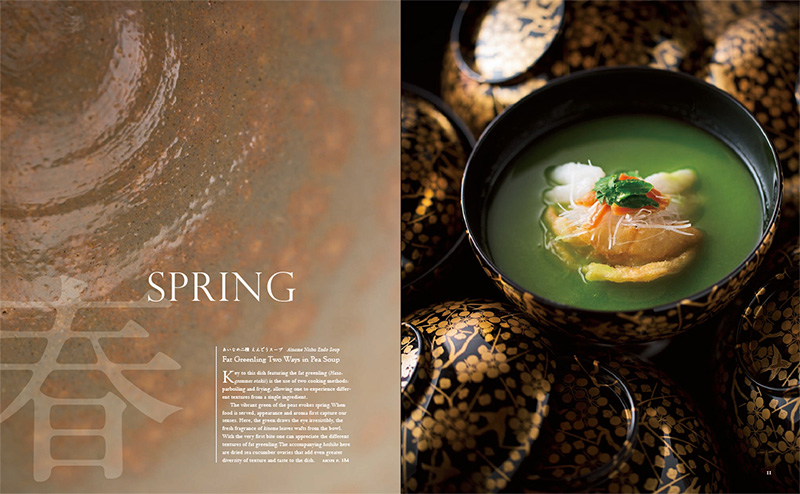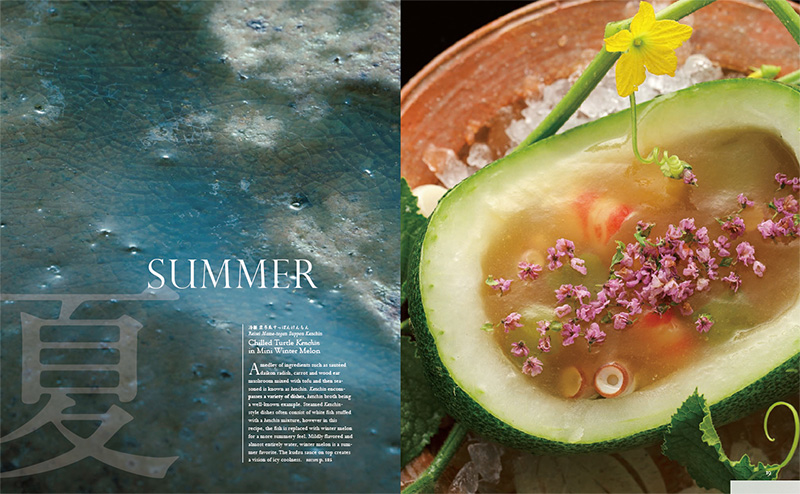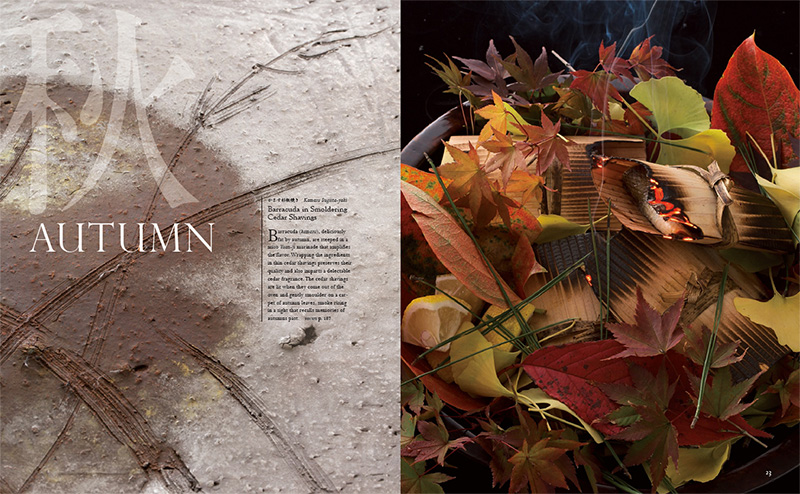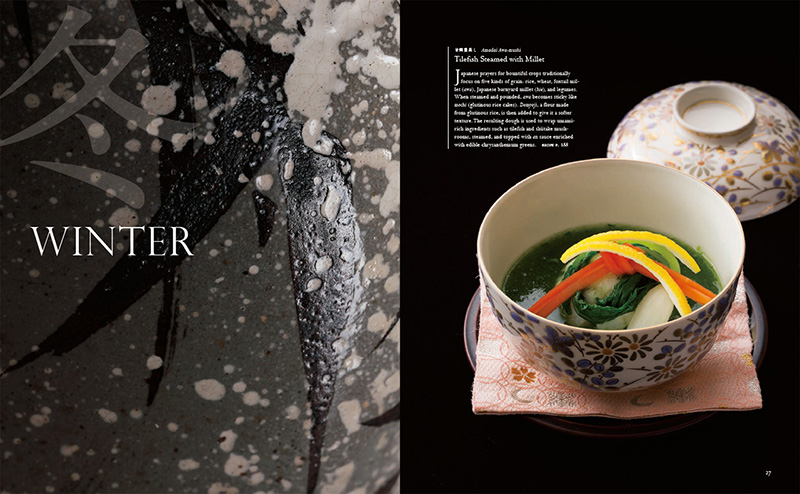6. Japan's four seasons and ingredients
Traditional Japanese cuisine reflects the beauty of nature and the four seasons in Japan. Incorporating the most delicious and nutritious seasonal ingredients and feeling the changes of the seasons through the colors of the ingredients is one of the charms of Japanese cuisine.
<Spring>
Spring is the season of new life. Bamboo shoots, butterbur sprouts, rape blossoms and other vegetables, as well as beans and broad bean, peas and other legumes are used.
Fish such as Sakura bass and Fat greenling are in spring season. This picture is a simmered bowl with Fat greenling.
The bright green color seen represents spring and green of sprouts catches the eye.

<Summer>

Summer is the season of the sun. In this hot, humid time of year in Japan, dishes represent the natural beauty of summer and create a sense of coolness.
The many vegetables in season in the summer include cucumber, pumpkin and winter squash, members of gourd family that cool the body, making them the perfect ingredients to counter the summer heat. Tomatoes, a member of the eggplant family high in vitamin C, and fish such as eel, sweetfish and conger (Japanese hamo) are also features of this season.
<Autumn>
The natural colors of autumn can be seen in Japanese cuisine. Autumn is a rich season for food.
Sweet potatoes and other members of the potato family store nutrients under the summer sun and are rich in starch and vitamin C.
Fruits such as grapes, pears, chestnuts, persimmons and apples are plentiful at this time of year. In addition, many mushrooms such as matsutake, shimeji, enoki and maitake are in season in autumn.
Fatty, delicious salmon and saury are features of autumn as well.

<Winter>

In winter when it is dark and cold outside, dishes with root vegetables such as daikon radish, turnip, carrots, and burdock root are used to create warmth.
Leafy vegetables such as Chinese cabbage and leeks are increased its sweetness by the harsh cold which making the food more delicious.
In this season, citrus fruits such as mandarin oranges and lemons are harvested.
Seafood such as yellow fish and anglerfish, crab, oysters and blowfish are also plentiful at this time of year.
Japan has one of the richest seasonal harvests in the world, with about 150 different kinds of ingredients, as well as variety of seafood, seaweed and other marine products. Such an extensive variety is rarely seen in the world.
Japanese cuisine reflects the beauty of nature and focuses on the tastes of seasons.
For more information about Japanese cuisine, here is the book for you!